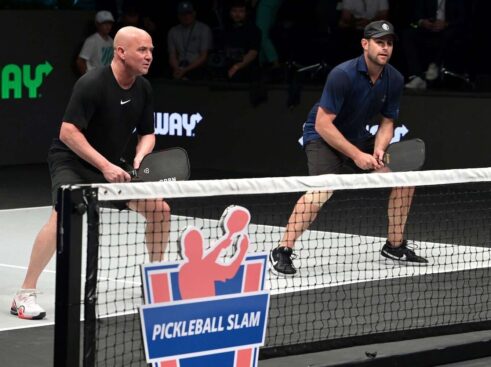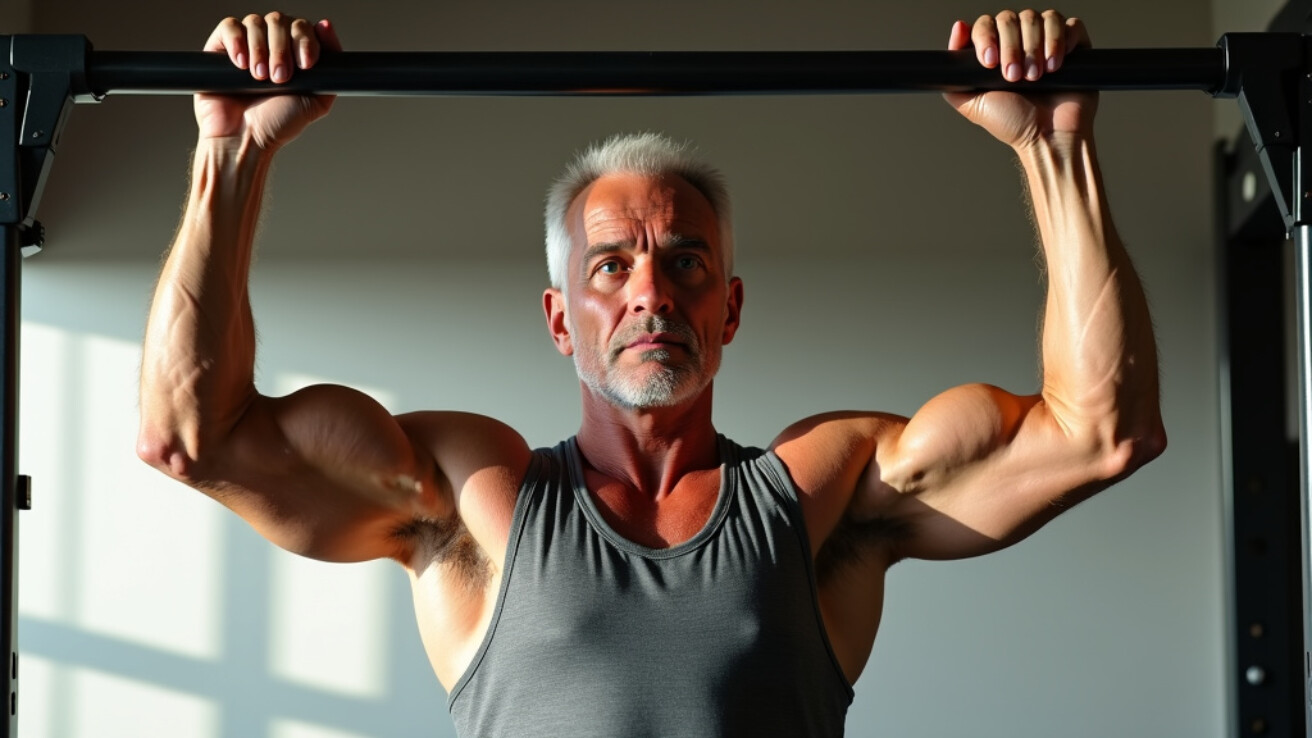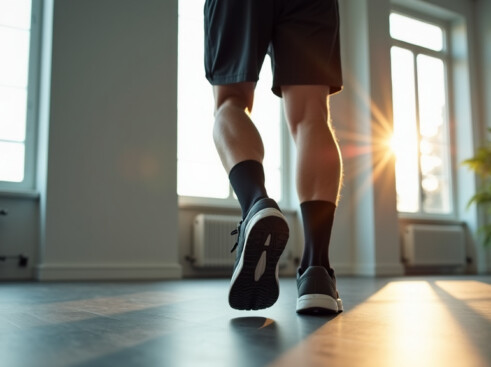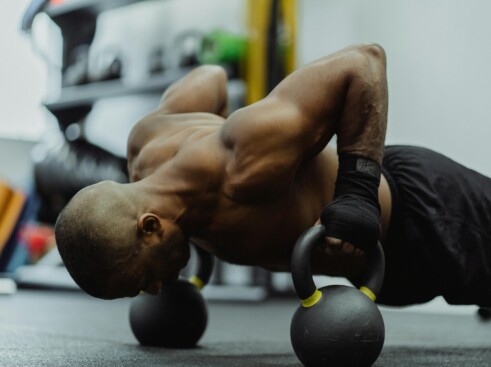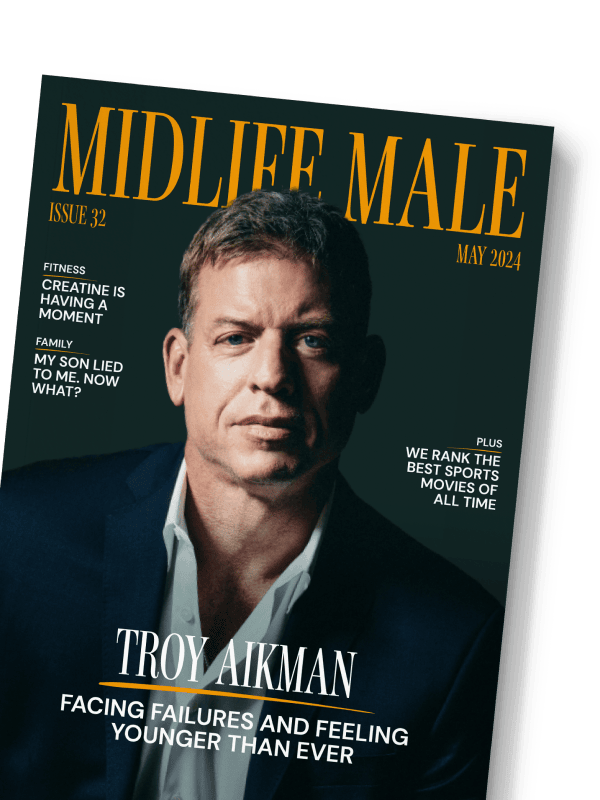Did you know there’s a muscle in your arm that generates 50% more power than your biceps? Meet the brachialis – the true workhorse of elbow flexion that lies beneath your biceps.
This unsung hero of arm strength resides deep within your upper arm, quietly powering through everyday movements. While your biceps receives all the glory, the brachialis muscle performs much of the heavy lifting when you bend your elbow.
Unlike its more visible neighbor, the brachialis connects directly to your ulna bone and acts as the primary elbow flexor. This strategic positioning makes it essential for every pulling motion you perform, from rock climbing to lifting your morning coffee.
If you’ve been focusing solely on biceps exercises for arm strength, you may be overlooking this crucial muscle. Learning to properly engage and train the brachialis can enhance both your arm strength and muscular development.
Top 7 Brachialis Exercises for Bigger, Stronger Arms
The brachialis muscle, hidden beneath your biceps, contributes up to 60% of your arm’s flexion strength. Located on the outer portion of your upper arm, this powerful muscle helps create that coveted sleeve-busting look when properly developed.
Training your brachialis effectively requires focusing on exercises that use either a neutral or pronated (palms-down) grip. These positions shift emphasis away from the biceps, forcing your brachialis to handle more of the workload.
Here are seven effective exercises to target this crucial yet often overlooked muscle.
1. Pull-ups with Pronated Grip
Pull-ups with a wide, overhand grip effectively develop the brachialis. This compound movement generates significant muscle activation, particularly during the bottom portion where the brachialis works hardest.
When performing pull-ups, maintain strict form by keeping your core tight and pulling your chest to the bar. The slower, controlled descent especially engages the brachialis muscle.
For optimal results, aim for 3-4 sets of 6-8 controlled repetitions, focusing on quality over quantity.
2. Hammer Curls
Hammer curls, performed with a neutral grip (palms facing each other), directly stimulate the brachialis. The neutral grip position naturally reduces biceps involvement, making your brachialis work harder.
According to research from Muscle and Strong, this exercise effectively shifts workload from the biceps to the brachialis muscle.
Start with lighter weights to master proper form before progressing to heavier loads. Aim for 3 sets of 12-15 controlled repetitions.
3. Zottman Curls
The Zottman curl combines a traditional curl with a reverse curl in one fluid movement. This exercise targets the brachialis during both the lifting and lowering phases, maximizing muscle engagement.
Begin with a traditional bicep curl, then rotate your palms to face downward at the top. Lower the weight slowly with this reverse grip to emphasize the eccentric phase.
Focus on controlled movement throughout the exercise. Perform 3 sets of 8-10 repetitions with moderate weight.
4. Cross-Body Hammer Curls
Cross-body hammer curls create a unique angle of attack for the brachialis muscle. The crossing motion helps isolate the muscle more effectively than standard curls.
Keep your elbow fixed at your side while curling the dumbbell across your body toward the opposite shoulder. This movement pattern creates maximum tension on the brachialis.
Perform 3 sets of 12 repetitions per arm, maintaining strict form throughout the movement.
5. EZ-Bar Reverse Curls
The EZ-bar reverse curl targets the brachialis through a pronated grip position. The angled bar allows for a more natural wrist position compared to straight bar reverse curls.
Keep your elbows close to your sides throughout the movement. The pronated grip significantly reduces biceps involvement, forcing your brachialis to handle more of the work.
Start with lighter weights to perfect your form. Aim for 3 sets of 10-12 controlled repetitions.
6. Cable Hammer Curls
Cable hammer curls maintain constant tension throughout the entire range of motion. This continuous resistance helps maintain muscle engagement from start to finish.
Use a rope attachment for the most natural grip position. The cable’s resistance path creates unique stimulus patterns for muscle development.
Perform 3 sets of 12-15 repetitions, focusing on maintaining tension throughout each rep.
7. Preacher Hammer Curls
Preacher hammer curls eliminate momentum and body English, ensuring proper isolation of the brachialis muscle. The supported position helps maintain strict form throughout the movement.
Position your arms firmly against the preacher bench pad. Use a controlled tempo, especially during the lowering phase of the movement.
Complete 3 sets of 10-12 repetitions with moderate weight to maintain proper form and muscle engagement.
| Exercise Category | Reps | Sets | Rest Interval |
|---|---|---|---|
| Muscular Endurance | 12+ | 2-3 | ≤30 seconds |
| Muscle Hypertrophy | 6-12 | 3-6 | 30-90 seconds |
| Muscular Strength | 1-5 | 2-6 | 2-5 minutes |
| Muscular Power | 1-5 | 3-5 | 2-5 minutes |
Incorporating Brachialis Exercises into Your Arm Workout
The often-overlooked brachialis muscle contributes up to 60% of your elbow flexion strength, making it essential for building impressive arms. Ready to enhance your arm development?
Smart exercise selection and proper programming are key to effectively integrating brachialis training into your arm workouts for maximum results.
Whether you’re a beginner or an experienced lifter, this guide will help you optimize your arm training for balanced, powerful development.
Optimal Exercise Selection and Sequencing
Start your arm workout with compound movements targeting the brachialis. The pull-up, using a pronated grip, is an excellent choice as it engages multiple muscle groups while emphasizing brachialis activation.
Follow compound movements with isolation exercises like hammer curls and reverse curls, which target the brachialis through specific grip variations and controlled movement patterns.
For optimal results, incorporate exercises using neutral or pronated grips, as these positions minimize biceps involvement and increase brachialis activation.
Training Volume and Frequency Guidelines
The brachialis responds well to both heavy loads and higher repetition ranges. Schedule 2-3 dedicated brachialis-focused workouts weekly, allowing at least 48 hours between sessions for recovery.
Perform 3-4 sets per exercise, with rep ranges of 8-12 for strength and 12-15 for hypertrophy. This approach ensures comprehensive muscle development.
Focus on the eccentric (lowering) phase of each movement, as controlled negatives enhance muscle growth and strength gains.
| Exercise | Sets | Reps | Grip Type |
|---|---|---|---|
| Pull-ups with Pronated Grip | 3-4 | 6-8 | Pronated |
| Hammer Curls | 3 | 12-15 | Neutral |
| Zottman Curls | 3 | 8-10 | Mixed (Supinated to Pronated) |
| Cross-Body Hammer Curls | 3 | 12 | Neutral |
| EZ-Bar Reverse Curls | 3 | 10-12 | Pronated |
| Cable Hammer Curls | 3 | 12-15 | Neutral |
| Preacher Hammer Curls | 3 | 10-12 | Neutral |
Sample Brachialis-Focused Arm Workout
Begin with a thorough warm-up of light cardio and dynamic stretching for the arms and shoulders to ensure optimal performance and prevent injury.
Start with pronated-grip pull-ups: 3 sets of 8-10 reps, maintaining controlled movement and full range of motion to establish a strong foundation.
Follow with cross-body hammer curls: 3 sets of 12 reps per arm. The cross-body angle creates effective tension on the brachialis while maintaining proper form.
Advanced Training Techniques
Use tempo training by controlling the eccentric phase of your curls for 3-4 seconds. This increased time under tension maximizes brachialis engagement and growth stimulus.
Implement drop sets on your final exercise: start with a heavier weight for 8 reps, then immediately switch to a lighter weight for 12-15 reps to break through plateaus.
Maintain proper form throughout each movement, as the brachialis responds best to controlled, deliberate repetitions rather than explosive movements.
The Benefits of Strengthening Your Brachialis
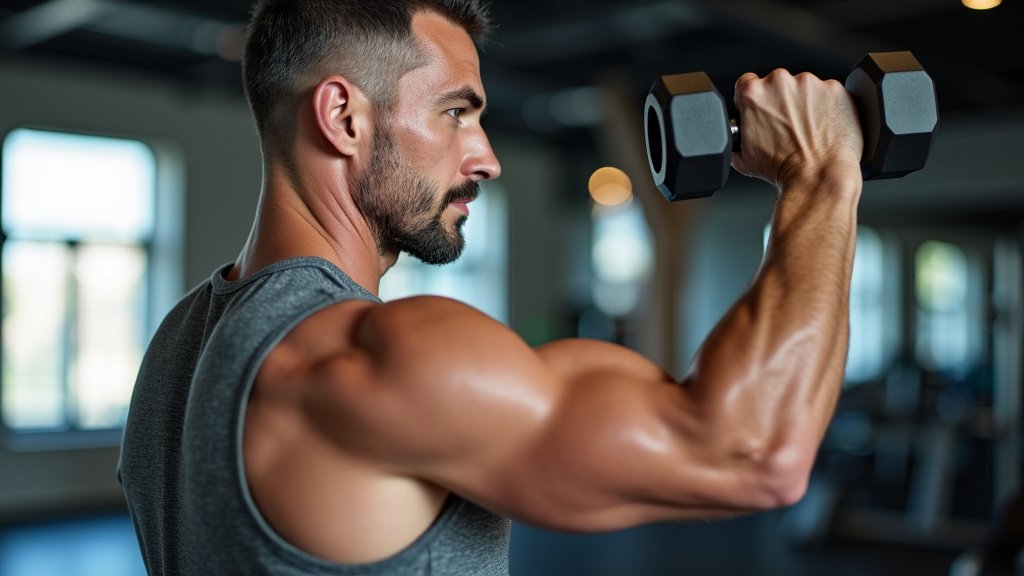
Your brachialis muscle may be hiding beneath your biceps, but this unsung hero of arm strength deserves serious attention. As the primary elbow flexor, this powerful muscle generates up to 60% of your arm’s flexion force – significantly more than the more visible biceps.
A well-developed brachialis acts as a natural arm enhancer, pushing up your biceps to create fuller, more aesthetically pleasing arms. When you strengthen this deep muscle, it pushes your biceps outward, creating that coveted 3D look that commands attention.
Enhanced Performance and Strength
Training your brachialis directly translates to improved performance across numerous exercises. The muscle’s unique ability to generate force in any forearm position – whether pronated, supinated, or neutral – makes it invaluable for complex movements like pull-ups, rows, and various pulling exercises.
Unlike the biceps, which lose strength when your palm faces down, the brachialis maintains its power regardless of grip position. This capability makes it essential for activities requiring sustained elbow flexion strength, from rock climbing to Olympic lifting.
Consider your brachialis your arm’s foundation – when it’s strong, every pulling movement becomes more efficient and powerful.
Injury Prevention and Joint Health
A strong brachialis isn’t just about aesthetics and performance – it’s crucial for joint health. The muscle provides vital stability to your elbow joint, helping distribute loads more evenly during heavy lifting.
By strengthening your brachialis, you create a more balanced muscular structure around the elbow joint. This balance helps prevent common issues like tendinitis and reduces the risk of training-related injuries.
The brachialis also acts as a natural shock absorber during explosive movements, protecting your elbow from excessive stress.
Aesthetic Enhancement
While you can’t directly see the brachialis, its impact on arm aesthetics is undeniable. As this deep muscle develops, it creates what bodybuilders call ‘arm thickness’ – that impressive width visible from the front view.
A developed brachialis fills out your arm from a different angle than the biceps, creating a more complete, muscular appearance. This added dimension makes your arms look impressive from every angle, not just during a classic bicep pose.
The visual impact is especially noticeable when wearing t-shirts or fitted clothing, as the enhanced arm thickness creates a more powerful, athletic silhouette.
Common Mistakes to Avoid in Brachialis Training
Training the brachialis effectively requires more than just going through the motions. As a deep muscle lying beneath your biceps, it’s crucial to avoid common mistakes that limit its development. Let’s examine the most frequent errors and their solutions.
Overreliance on Traditional Bicep Curls
Many lifters assume regular bicep curls sufficiently target the brachialis. While these exercises have their place, they primarily engage the biceps brachii, especially during supinated (palms-up) movements.
The brachialis actually generates up to 60% of the tension during elbow flexion, making it essential to incorporate exercises that specifically target this muscle.
To correct this, focus on exercises using neutral or pronated (palms-down) grip positions, such as hammer curls and reverse curls, which minimize biceps involvement and maximize brachialis activation.
Poor Exercise Form and Technique
A common mistake is swinging the weights using body momentum rather than isolating the arm muscles. This reduces brachialis engagement and can lead to potential injuries.
To maintain proper form, keep your upper arms stationary against your sides, focus on moving only your forearms, and avoid curling the weights too high, which can shift focus away from the brachialis.
Remember to control both the lifting and lowering phases of each movement, as the brachialis responds particularly well to slow, controlled eccentric (lowering) motions.
Incorrect Training Volume and Frequency
Another common error is either overtraining or undertraining the brachialis. Since it’s a relatively strong muscle, some lifters mistakenly believe they need to hammer it with heavy weights every session.
For optimal results, incorporate brachialis-specific exercises 2-3 times per week, allowing sufficient recovery time between sessions. Aim for 9-12 total sets per workout, spread across various exercises.
Progressive overload is essential, but increase weight gradually to maintain proper form and prevent strain on the elbow joint.
Neglecting Grip Variations
Many trainees stick to just one type of grip when training arms, missing out on complete brachialis development. The muscle responds differently to various grip positions and angles.
Include a mix of neutral-grip exercises (hammer curls), pronated movements (reverse curls), and cross-body variations to target the brachialis from multiple angles.
Experiment with different grip widths and implement tools like dumbbells, cables, and EZ bars to provide varied stimuli for muscle growth.
Improper Exercise Sequencing
Placing brachialis exercises at the end of your workout, when fatigue has already set in, can compromise form and reduce their effectiveness.
Consider performing your brachialis-focused movements earlier in your workout when your energy levels are higher, especially if using heavier weights or performing complex movements like Zottman curls.
Save less intense variations or lower weight exercises for the end of your session to finish strong without compromising form.
Conclusion: Maximizing Your Arm Development with Brachialis Training
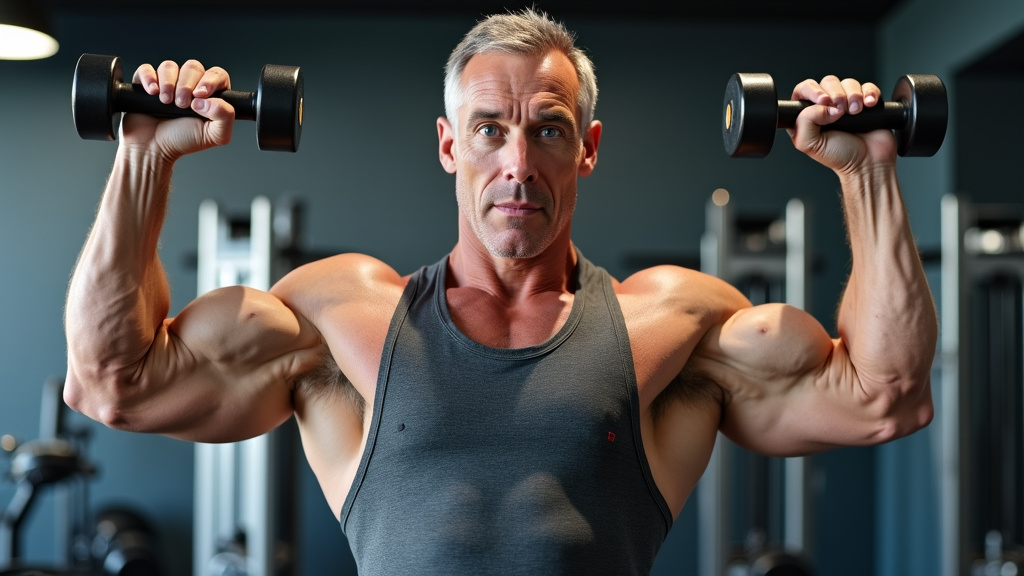
The brachialis muscle, though often overlooked, is truly the unsung hero of arm development. This powerful muscle lying beneath your biceps contributes up to 60% of your arm’s flexion strength and plays a crucial role in creating that coveted arm thickness.
A well-developed brachialis enhances your strength and pushes your biceps outward, creating fuller, more impressive arms. Through targeted exercises like hammer curls, reverse curls, and Zottman curls, you can effectively stimulate this muscle for both functional strength and aesthetic improvements.
The brachialis, unlike the biceps, maintains its strength regardless of arm position or grip type. This unique characteristic makes it an invaluable asset for everything from heavy pulls to everyday tasks. By incorporating brachialis-focused training into your routine, you’ll develop more functional, injury-resistant limbs while building bigger arms.
Remember that a strong brachialis requires consistent effort. Focus on proper form, progressive overload, and regular training. Whether your goal is to fill out your sleeves or increase your pulling strength, dedicated brachialis training is essential for complete arm development. Start implementing these exercises today to transform your arms into their strongest, most impressive version.
As research shows, the brachialis is about 50% stronger than the biceps, making it a crucial muscle for overall arm strength. Don’t let this powerhouse muscle remain undertrained – your arms’ true potential depends on it.


